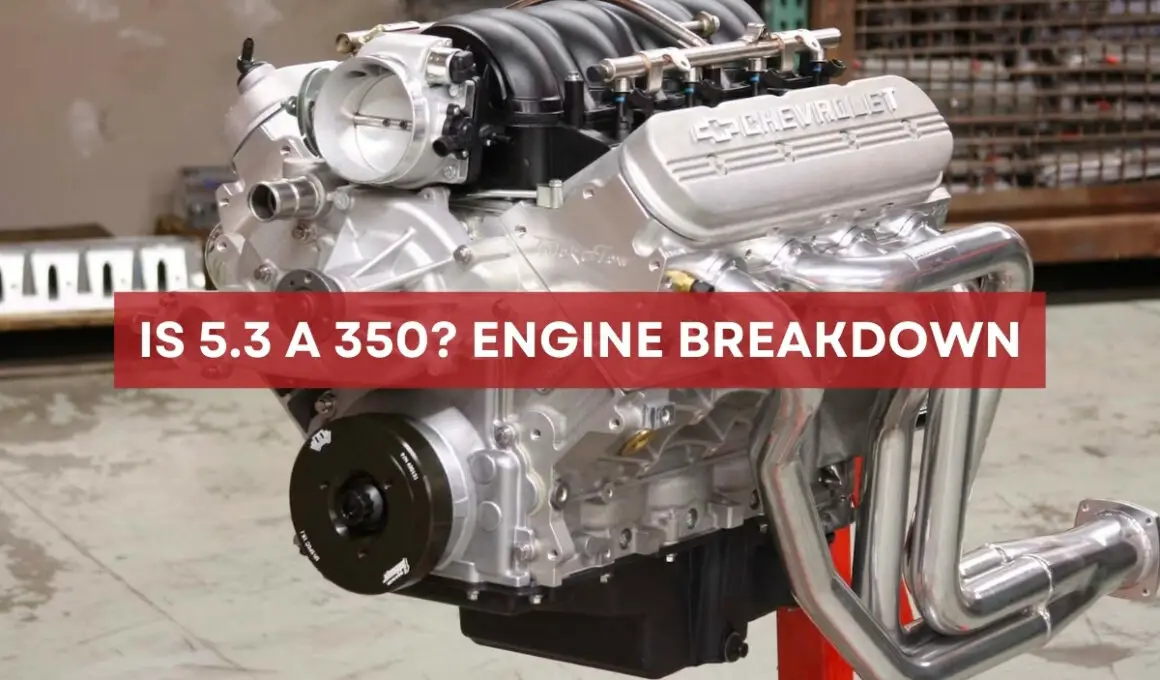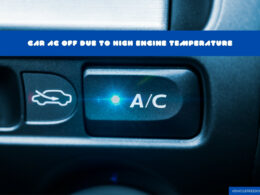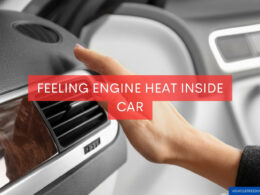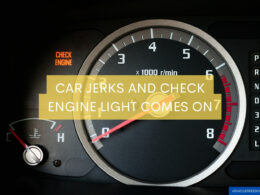In This Article Show
In the world of automotive mechanics, questions about engine sizes and their performances pop up more often than you’d think. One question that seems to always be on the tip of everyone’s tongue is: “Is 5.3 a 350?”
Now, I’ve been an experienced mechanic for over 13 years, and during this time, I’ve encountered this query countless times.
Engines, from classic cars or contemporary models, each have a unique story. Some are legends because of their unparalleled performance, while others are treasured for their innovative technology.
When we discuss the 5.3L and the 350 cubic inch engines, we’re delving into a topic that combines history and innovation beautifully. For those new to this topic, and even for seasoned car enthusiasts, it’s essential to understand the nuances between these two engines.
Not just for the sake of knowledge, but also if you’re considering a purchase, upgrade, or even just a chat at the local car meet. Let’s dive in.
Historical Context Of the 350 Engine
The 350 engine, often referred to by its measurement in cubic inches, is more than just an engine – it’s a piece of automotive history. Having spent over 13 years as a mechanic, I’ve seen and worked on many engines, but the 350 has always held a special place in both my heart and the broader car community.
Introduced in the late 1960s by General Motors for Chevrolet, the 350 rapidly gained popularity and became a staple in the American muscle car era. This small block V8 engine was lauded not just for its robust performance but also for its adaptability.
It was one of those engines that could be found in a wide array of vehicles, from sports cars to trucks, making it a favorite among both car enthusiasts and everyday drivers. Several reasons contribute to the iconic status of the 350 engine.
First, its simple design made it relatively easy to work on, a boon for mechanics and DIY car enthusiasts alike. The engine was also renowned for its durability, often running smoothly with minimal issues for hundreds of thousands of miles.
Furthermore, the aftermarket support for the 350 was, and continues to be, immense. This means that customizing and upgrading this engine has always been straightforward, further cementing its legendary status.
While newer engines, including the 5.3L, have entered the scene with advanced technologies and capabilities, the 350 remains a symbol of a golden era in automotive history.
It stands as a testament to the blend of raw power and engineering simplicity, a combination that made it one of the most revered engines of its time.
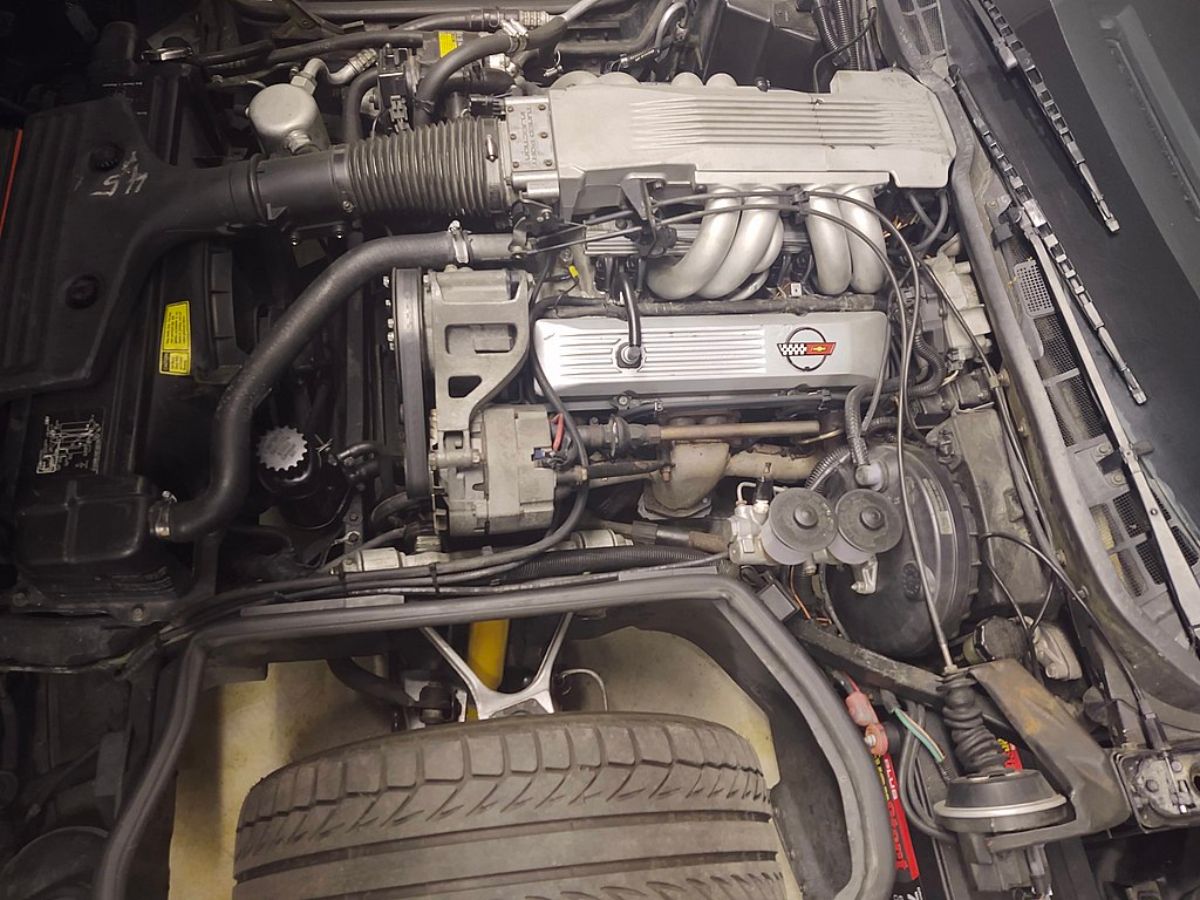
Introduction to the 5.3L Engine
While the 350 engine has left an indelible mark in automotive history, the 5.3L engine represents the strides made in modern engine technology. Originating from General Motors in the late 1990s, the 5.3L V8 engine emerged as a part of the Vortec family, later evolving into the EcoTec3 group in more recent versions.
The 5.3L, primarily associated with Chevrolet and GMC trucks and SUVs, is known for offering a balanced mix of performance and efficiency. While it may not have the sheer brute force of classic engines like the 350, what sets the 5.3L apart is its blend of modern-day efficiency, reliability, and technological advancements.
Over the years, the engine has seen various improvements. With variable valve timing, direct fuel injection, and cylinder deactivation features, the 5.3L offers optimized fuel consumption without compromising on power.
These features enhance the engine’s overall performance and contribute to its eco-friendliness, a growing concern in today’s automotive world. It’s also worth noting that the 5.3L is not just a favorite in trucks and SUVs.
Due to its versatility and the adaptability of its design, many automotive enthusiasts have also chosen this engine for custom projects and upgrades.
In Essense 🚖
The 5.3L engine is a testament to how far we’ve come in automotive engineering. It encapsulates the modern era’s advancements and priorities, delivering power and efficiency in a neatly designed package.
Comparing Engine Size: Cubic Inches vs. Liters
Understanding the difference between these two can sometimes be confusing for many automotive enthusiasts, especially those who grew up during the transition from cubic inches to liters as the standard measurement.
It’s akin to the metric versus imperial measurement systems used in everyday life. So, let’s break it down.
Cubic Inches
This is a unit of volume traditionally used in the United States to express the displacement size of an engine. The term “cubic inch” refers to the total volume of all the cylinders in an engine. Historically, many American cars, like the ones equipped with the revered 350 engine, used this measurement.
Liters
This is a metric unit of volume and has become the international standard for engine displacement in recent years. The switch to liters was in part due to globalization and the international market where metric units are more common. When we say an engine is “5.3L,” we’re referring to its total volume displacement in liters.
Conversion Basics Of Cubic Inches And Litters
As a general rule of thumb, there are about 61.02 cubic inches in a liter. So, if you ever want to convert liters to cubic inches, multiply the number by 61.02. Conversely, you’d divide by the same number to convert cubic inches to liters.
The 350 engine, when referred to in liters, is approximately 5.7L (350 ÷ 61.02). The 5.3L engine, in terms of cubic inches, is roughly 323ci (5.3 x 61.02).
While these measurements may seem like just numbers, they’re vital for understanding engine size, especially when comparing performance, fuel efficiency, and general capabilities.
By grasping the relationship between cubic inches and liters, one can appreciate the history and evolution of automotive engineering, and it also becomes easier to understand specifications when buying or upgrading vehicles.
Performance Differences
When we delve into the performance differences between the 5.3L engine and the classic 350 cubic-inch engine, we’re venturing into an area that’s a blend of raw numbers, technology, and, quite honestly, a touch of nostalgia.
Both engines have earned their stripes in the automotive world but for slightly different reasons. Here’s a closer look:
1. Horsepower & Torque
350 Engine
Historically, the stock 350 engine’s horsepower ratings have varied depending on the specific model and configuration, but many hovered in the 200-300 horsepower range. Torque figures, crucial for pulling power and off-the-line performance, were similarly variable but could reach upwards of 380 lb-ft in specific configurations.
5.3L Engine
The modern 5.3L engines, depending on the generation and model, can produce horsepower in the range of 285-355 and torque figures from 330-383 lb-ft. The variation is due to technological advances, such as variable valve timing and direct fuel injection, which can influence performance.
2. Fuel Efficiency
350 Engine
As a product of its era, the 350 wasn’t primarily designed with fuel efficiency in mind. MPG figures could vary depending on the vehicle’s weight, transmission, and usage, but many models averaged around 12-15 MPG.
5.3L Engine
One of the shining points of the 5.3L engine is its improved fuel efficiency. Thanks to technologies like cylinder deactivation, which can shut off certain cylinders during cruising to save fuel, the 5.3L can achieve MPG figures upwards of 16-23, again depending on the vehicle and conditions.
3. Throttle Response & Driving Experience
350 Engine
Known for its raw, unfiltered driving experience, the 350 provides immediate throttle response and a distinctive exhaust note. Many enthusiasts love it for this unadulterated driving feel.
5.3L Engine
While still delivering robust performance, the 5.3L is a bit more refined due to modern engineering. The throttle response is smooth, and the overall drive feels more controlled, especially in newer vehicles with advanced traction and stability systems.
4. Emissions & Environmental Impact
350 Engine
Older engines, including the 350, don’t have the emission controls found in modern vehicles. As a result, they tend to release more pollutants.
5.3L Engine
Modern emission standards have necessitated cleaner engines. The 5.3L, with its advanced tech, typically emits fewer pollutants and meets stricter environmental regulations.
In summary, while the 350 offers a raw and nostalgic driving experience with commendable power, the 5.3L brings advancements in technology that boost performance, fuel efficiency, and environmental friendliness to the table. Choosing between them often comes down to personal preference and specific needs.
Technological Advances in the 5.3L Engine
The automotive world has seen a surge of innovations over the past few decades, with engine technology being at the forefront of this evolution.
The 5.3L V8 engine by General Motors is a prime example of how modern engines have adapted to meet the demands of the current era, balancing power with efficiency and environmental considerations. Let’s delve into some of the notable technological advances present in the 5.3L engine:
1. Variable Valve Timing (VVT)
VVT systems allow the engine to alter the timing of the opening and closing of the intake and exhaust valves. This ensures optimal performance across a wide range of engine speeds. Enhanced fuel efficiency, increased horsepower and torque at varying RPMs, and reduced emissions.
2. Direct Fuel Injection
Unlike traditional fuel injection systems where fuel is injected into the intake manifold, direct injection sprays fuel directly into the combustion chamber. Improved combustion efficiency, increased power output, better fuel economy, and reduced emissions.
3. Cylinder Deactivation (Active Fuel Management)
This technology allows the engine to “turn off” certain cylinders during light-load conditions, such as cruising on the highway, effectively transforming the V8 into a V4. Significant improvement in fuel efficiency without compromising on-demand power when needed.
4. Advanced Engine Control Modules (ECM)
The brain of the engine, the ECM, monitors and adjusts engine functions in real time using an array of sensors. Optimizes performance, fuel consumption, and emissions, while also diagnosing and notifying of any potential issues.
5. Enhanced Cooling Systems
Modern engines, including the 5.3L, utilize advanced cooling systems that ensure optimal operating temperatures, even under strenuous conditions. Prolonged engine lifespan, reduced risk of overheating, and consistent performance.
6. Aluminum Construction
Many components of the 5.3L engine, including the block and heads, are constructed from aluminum rather than traditional cast iron. Reduced engine weight, leading to better overall vehicle fuel efficiency and handling characteristics.
In essence, the 5.3L engine embodies the ethos of contemporary automotive engineering. By integrating these advanced technologies, it not only meets the demands of today’s drivers in terms of performance and reliability but also aligns with global concerns about fuel economy and environmental impact.
Longevity and Maintenance Of Engines
The lifespan of an engine, while contingent on numerous factors, is a crucial point of consideration for both enthusiasts and everyday drivers.
Alongside this, understanding the maintenance requirements can make a significant difference in ensuring that the engine runs efficiently for a prolonged period. Here’s a comparative breakdown of the 350 and 5.3L engines in terms of longevity and maintenance:
1. Lifespan Expectancy
350 Engine
Known for its rugged construction, many 350 engines have been known to run smoothly for several hundred thousand miles, especially when well-maintained. It’s not uncommon to hear stories of these engines crossing the 300,000-mile mark with proper care.
5.3L Engine
With advancements in materials and technology, the 5.3L engines are also built for the long haul. Regular maintenance and use of quality parts can also see these engines frequently surpassing the 250,000-mile mark, with some reaching the 300,000-mile threshold.
2. Maintenance Intervals
350 Engine
Older engines, like the 350, typically require more frequent maintenance checks, especially if they are in vehicles that are used rigorously. Oil changes, for instance, might be needed every 3,000 miles, with other components like spark plugs, belts, and hoses requiring more regular attention.
5.3L Engine
Modern oils and advancements in engine design mean that 5.3L engines can often go 5,000 to 7,500 miles between oil changes. Additionally, with sophisticated engine monitoring systems, drivers are better informed about when specific maintenance tasks are due.
3. Maintenance Complexity
350 Engine
One of the advantages of the 350’s design is its simplicity. DIY enthusiasts at home can carry out many maintenance tasks with basic tools. This engine’s widespread use also means a wealth of knowledge is available, from manuals to online forums.
5.3L Engine
While still manageable, the 5.3L engine, with its modern tech, can sometimes require more specialized tools or knowledge for certain tasks. However, routine maintenance remains straightforward, and the built-in diagnostics can often pinpoint issues before they become severe.
4. Parts Availability
350 Engine
Given its long history and immense popularity, finding parts for a 350 engine, whether OEM or aftermarket, is relatively easy and often affordable.
5.3L Engine
As a current production engine, parts are readily available. While some specialized components might come at a higher cost than older engine parts, the market is broad, and options abound.
In summary, both engines, when properly maintained, offer excellent longevity. The 350 has the advantage of simplicity and a vast community of enthusiasts, while the 5.3L benefits from modern engineering and diagnostic capabilities.
Ultimately, consistent maintenance, using quality parts and fluids, and understanding the unique needs of each engine are the keys to ensuring they stand the test of time.
Frequently Asked Questions
Is the 5.3L engine the same as a 350?
No. While they’re both V8 engines from General Motors, the 5.3L is approximately equivalent to 323 cubic inches. The 350 refers to an engine size of 350 cubic inches, which is roughly equivalent to 5.7 liters.
Which engine is more reliable, the 350 or the 5.3L?
Both engines have their merits. The 350 has a storied history of reliability, especially with proper maintenance. The 5.3L, being a modern engine, benefits from technological advancements and can also offer great reliability when well-maintained.
Can I swap a 350 with a 5.3L in my vehicle?
Engine swaps are possible but require extensive knowledge and can be complex. Factors to consider include mounting points, transmission compatibility, electronic controls, and more. It’s essential to consult with a specialist or do thorough research before attempting such a project.
Is the 5.3L more fuel-efficient than the 350?
Generally, yes. With technologies like direct fuel injection and cylinder deactivation, the 5.3L is designed for better fuel efficiency compared to older 350 models. However, actual fuel consumption can vary based on vehicle weight, driving habits, and other factors.
Which engine offers better performance?
“Better” can be subjective. In terms of raw power, specific configurations of both engines can offer similar performance. However, the 5.3L often delivers smoother power delivery and better torque at lower RPMs, thanks to modern technologies.
Are parts for the 350 still available?
Yes. The 350 engine’s widespread use over the years means there’s a vast market for both OEM and aftermarket parts.
Does the 5.3L require special maintenance compared to the 350?
Not necessarily “special,” but following the manufacturer’s maintenance guidelines is crucial. Modern engines like the 5.3L often have longer intervals between oil changes, but they might require specific oil types or other fluids to operate optimally.






